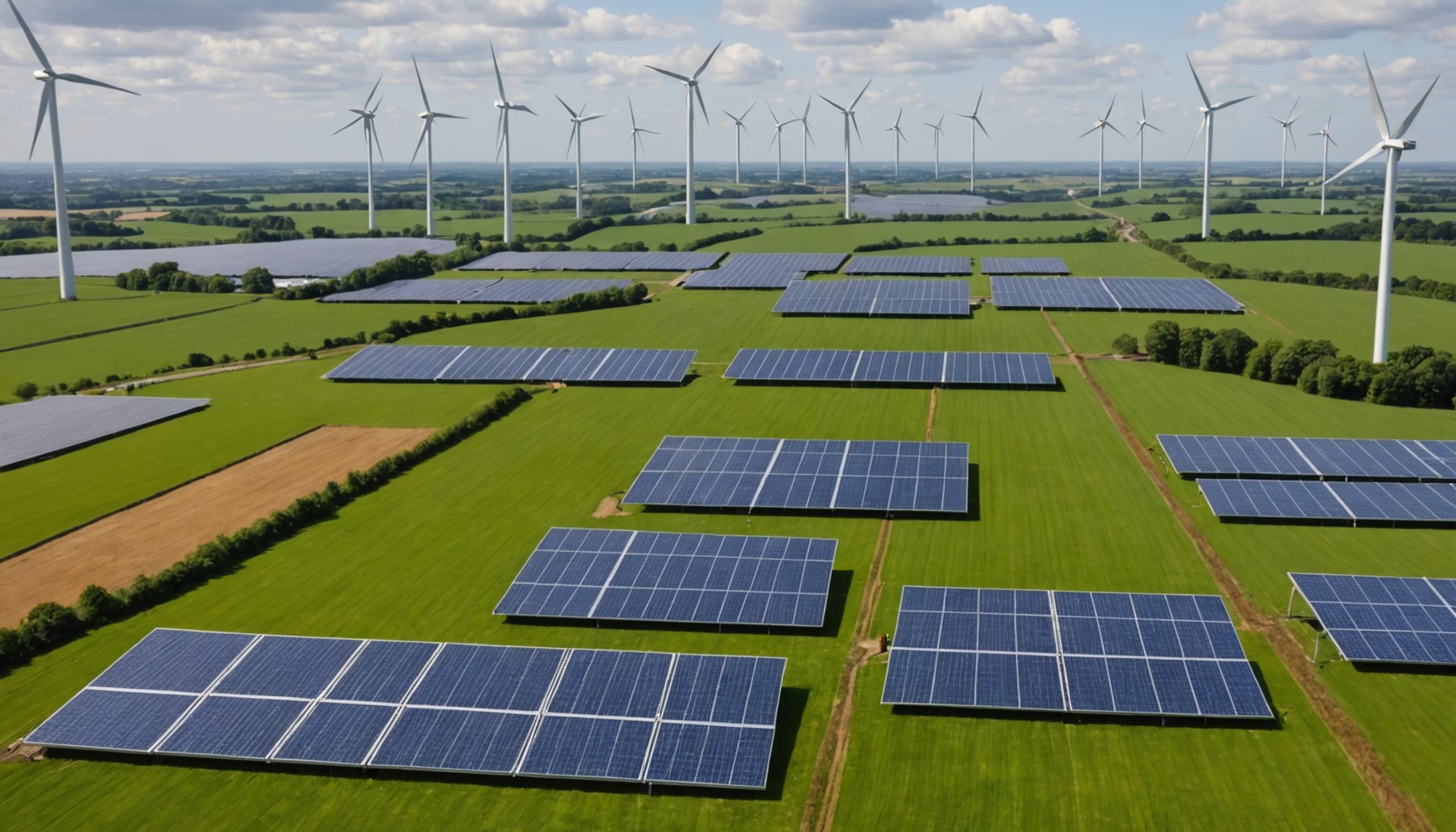Launching a UK Non-Profit Dedicated to Renewable Energy Initiatives: A Comprehensive Guide
Understanding the Mission and Objectives
When considering the launch of a non-profit organisation focused on renewable energy initiatives in the UK, it is crucial to start with a clear understanding of your mission and objectives. This involves defining what you aim to achieve and how you plan to make a positive impact on the environment and the community.
Defining Your Mission
Your mission should be centered around promoting sustainable development, energy conservation, and the use of renewable energy. For example, the Renewable Energy Foundation (REF) aims to raise public awareness of energy issues and encourage informed debate on a structured energy policy that is both ecologically sensitive and practical[1].
Topic to read : Mastering UK Environmental Assessments: Your Ultimate Guide to Launching a Sustainable Hotel Project
Setting Objectives
Your objectives could include:
- Promoting community energy projects
- Advocating for policy reforms to support renewable energy
- Providing educational resources and workshops on energy efficiency
- Collaborating with local authorities and other organisations to achieve net zero goals
Registering Your Non-Profit Organisation
To establish a legitimate non-profit organisation in the UK, you need to register with the Charity Commission. Here are the steps involved:
Additional reading : Kickstart Your UK Artisan Craft Marketplace: A Comprehensive Guide to Seller Compliance and Thriving Success
Choosing a Name and Structure
Ensure your organisation’s name is unique and reflects your mission. You can choose to register as a charitable company, a charitable incorporated organisation (CIO), or a trust.
Preparing Your Constitution
Your constitution should outline your organisation’s purpose, structure, and how it will be governed. It is essential to include details on how decisions will be made and how finances will be managed.
Registering with the Charity Commission
Submit your application to the Charity Commission, providing all necessary documents, including your constitution and details of your trustees. The Commission will review your application to ensure your organisation meets the criteria for charitable status.
Securing Funding and Financial Support
Funding is a critical component for any non-profit organisation. Here are some ways to secure financial support:
Grants and Funding Schemes
There are various grants available for renewable energy projects. For instance, the Community Energy Fund, Salix Funding, and the Industrial Energy Transformation Fund (IETF) provide financial support for energy efficiency and decarbonisation projects[5].
| Grant/Fund | Running Period | Eligibility | Potential Savings |
|---|---|---|---|
| Smart Export Guarantee (SEG) | From January 2020 | Requires a smart meter | 5p to 15p per kWh |
| Salix Funding | From 2004 | Interest-free loans for public sector bodies | Interest-free capital |
| IETF | Phase 3: 2024–2028 | For large energy-intensive industrial businesses | Funding for energy efficiency projects |
| Local Authority Grants | Varies | Depends on provider’s criteria | Varies |
Donations and Corporate Sponsorships
Reach out to private donors and corporate entities that align with your mission. Many organisations are willing to support green initiatives as part of their corporate social responsibility.
Community Support
Engage with your local community to raise funds through events, crowdfunding campaigns, and membership programs. For example, community energy projects in Wales have seen significant support from local residents, with 63% of respondents in a YouGov poll supporting community energy projects[2].
Building Community Support and Engagement
Community support is vital for the success of any renewable energy initiative.
Community Energy Projects
Community energy projects, such as wind turbines, solar arrays, and micro hydro schemes, are highly supported by local communities. These projects not only generate renewable energy but also reinvest profits back into the community, fostering a sense of ownership and engagement[2].
Public Awareness and Education
Organise workshops, seminars, and public events to educate people about the benefits of renewable energy. This can include demonstrations of energy-efficient technologies and discussions on climate change and its impacts.
Collaborating with Local Authorities
Work closely with local authorities to integrate community energy projects into local planning policies. This can involve providing guidance for neighbourhood planning groups and ensuring community energy groups are key stakeholders in Local Area Energy Plans[4].
Advocating for Policy Reforms
Policy reforms are essential to create a supportive environment for community energy initiatives.
Government Support and Coordination
Advocate for comprehensive support programs that facilitate partnerships between communities, the private sector, and local authorities. This includes expanding existing grant programs and providing capacity support for local community organisations[4].
Regulatory and Market Reforms
Push for regulatory reforms that allow community energy organisations to develop innovative business models, such as peer-to-peer trading and aggregated flexibility services at a community scale. The end of the feed-in-tariff has significantly impacted community energy projects, and new regulations are needed to address this[2].
Grid Connection and Clean Power Integration
Support reforms in grid connections and clean power integration. This includes implementing a community energy export guarantee for smaller generation schemes and recognizing the social and community benefits of these schemes in the UK’s Clean Power Plan commitments[4].
Practical Insights and Actionable Advice
Here are some practical tips to help you get started:
Conduct Thorough Research
Before launching your non-profit, conduct thorough research on existing organisations, funding opportunities, and community needs. This will help you identify gaps and opportunities.
Build a Strong Team
Assemble a team of dedicated individuals with diverse skills, including financial management, project development, and community engagement.
Engage with the Community
Engage early and often with your local community to build trust and support. This can involve public meetings, surveys, and collaborative planning sessions.
Seek Professional Advice
Consult with legal and financial advisors to ensure you are meeting all the necessary legal and financial requirements.
Examples and Anecdotes
Community Energy Wales
Community Energy Wales has been at the forefront of promoting community energy projects in Wales. Despite the challenges posed by the end of the feed-in-tariff, they continue to innovate and advocate for policy changes to support the sector. Leanne Wood, Co-executive Director of Community Energy Wales, emphasized the importance of community energy: “The people of Wales are ready to play a role in creating a better energy future”[2].
Renewable Energy Foundation
The Renewable Energy Foundation is a charity that has been promoting sustainable development through energy conservation and the use of renewable energy. They provide valuable resources, including online databases and bespoke query services, to support informed debate on energy policy[1].
Launching a non-profit organisation dedicated to renewable energy initiatives in the UK requires careful planning, community engagement, and advocacy for policy reforms. By understanding your mission, securing funding, building community support, and advocating for supportive policies, you can create a robust and effective organisation that contributes significantly to the UK’s net zero goals.
As Ben Ferguson from Community Energy Wales noted, “We need change in market regulations to allow us to grow”[2]. With the right approach and support, your non-profit can be a driving force in this change, helping to create a more sustainable and resilient energy future for communities across England, Scotland, and Wales.






